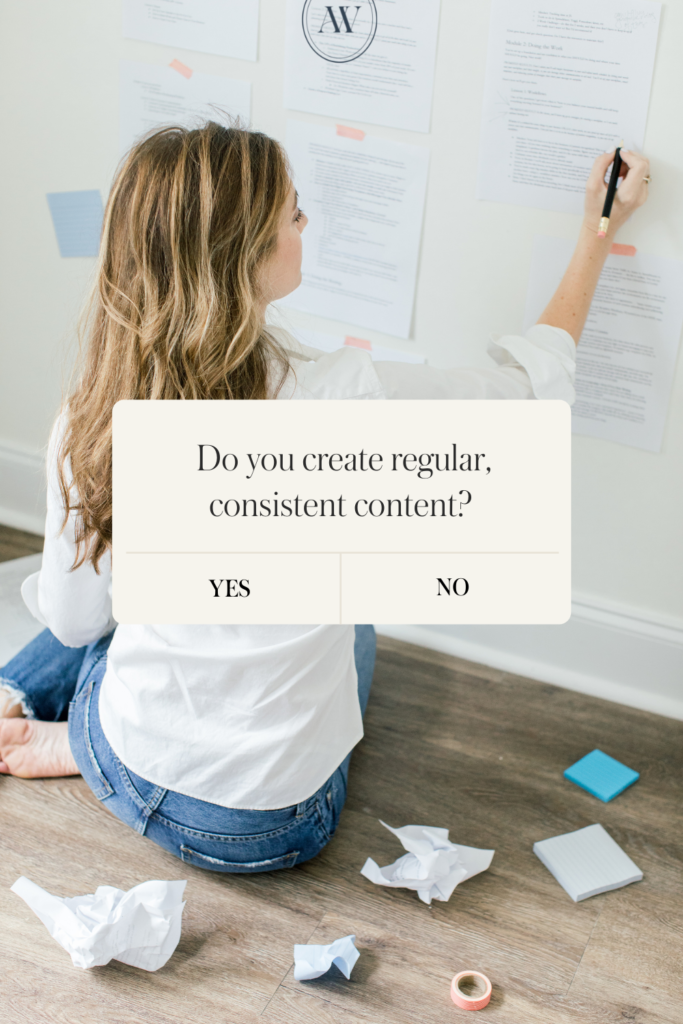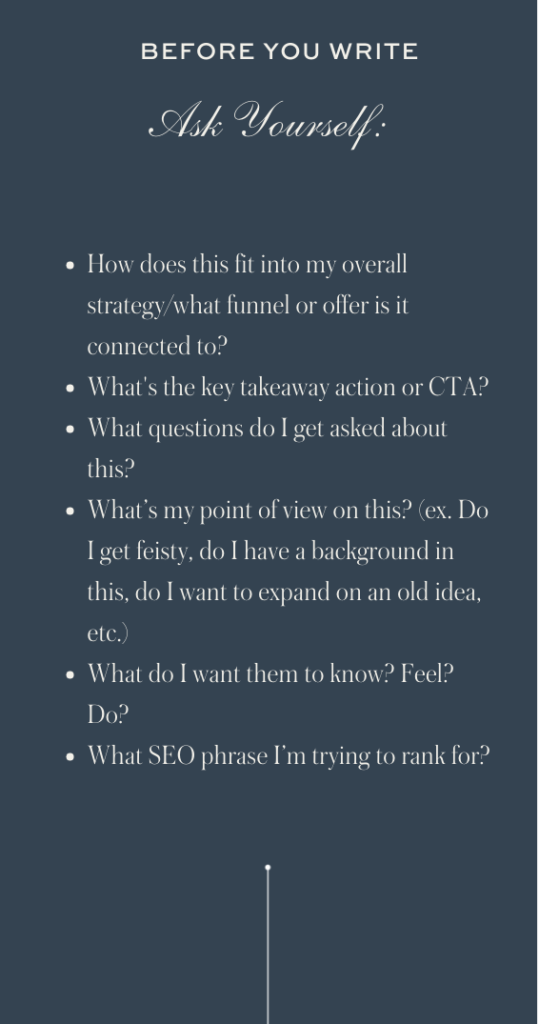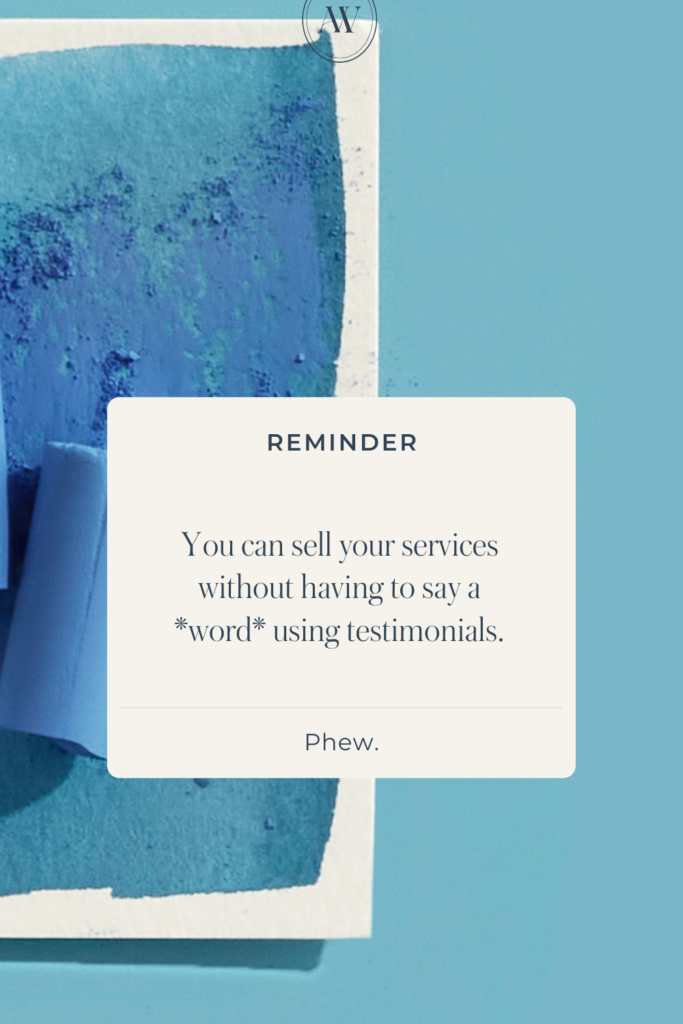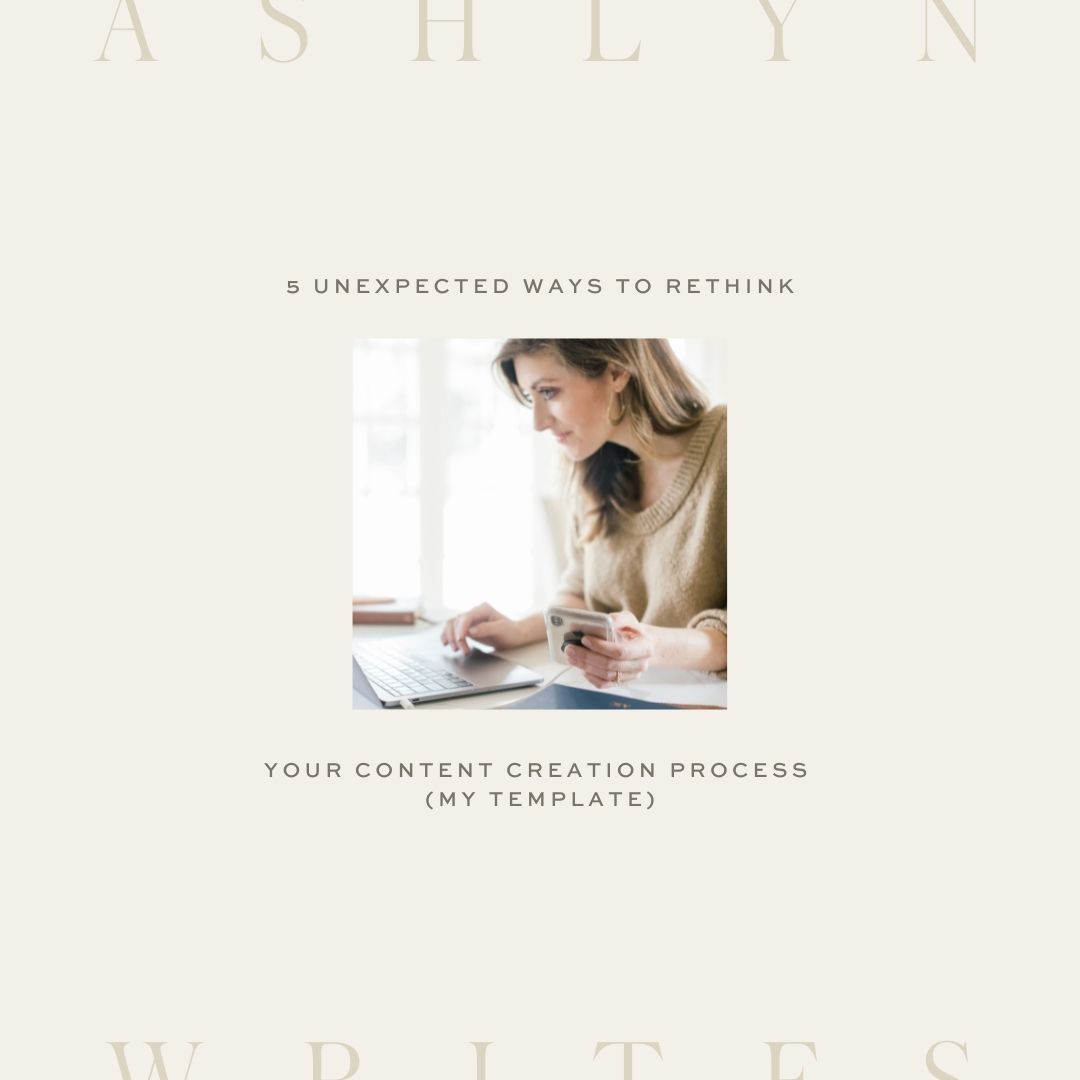The *biggest* challenge I see facing small business owners is not having enough time. We are an idea-rich and time-poor bunch of people, especially when it comes to content creation—which is kind of the name of the game with marketing. Content marketing IS the only marketing left, said Seth Godin. So how do you create regular, consistent content—in the midst of the 50 million other things you’re doing for your creative business—that’s actually worth the click?
You’ve got to extract an idea from your head, research it to the nth degree, write a really good synopsis of it, come up with the imagery direction, and then disseminate it on different platforms. Andddd that can be overwhelming.

I started blogging in 2009, and over the years have created a content creation template I’m so excited to share with you today. This content creation template has allowed me to crank out regular consistent content that’s worth the click.
Today, I want to show you how to support your content writing efforts with research and examples and stats, and tutorials. By the end of this post, you’ll know my entire content creation system for creating pillar pieces of content every week in my business.
If you want to get your hands on the actual template that I use in my business, again, I’m talking through it today. We recently added that to my template shop, The Copy Bar, so you can go over there and check it out, grab one for yourself.
Let’s hop to it!

No. 1| Build a content research idea bank and plot your content calendar
Build a content research idea bank and plot your content calendar. I hate having to think of what to blog about or what to create content about— I want a list ready to go at. all. times. So yes, I absolutely keep a list of batch ideas on file, but I have a couple of other tools in my arsenal that I lean on for bulking up my content with research and more fodder for me to reference when I’m creating these videos.
Related: 5 Editorial Calendar Strategies to Repurpose Your Content
One is we have an email folder that is easily searchable inside Google Drive. If there are any questions that we get asked about, they go in there.
I’ve said before, my goal is that we have at least one piece of pillar content to answer every type of recurring question that we get. If we get a question all the time about XYZ, I want at least one good free piece of content out there that can help that person answer the question.
Now, I go into my content planning system ad nauseam inside my Prime to Launch Masterclass Series. But your content has to tie to your sales goals. So once I know the topic, I can go into my overall content mapping calendar and see that topic fits to where it will actually help push sales goals.
No. 2| Tackle a Pre-writing question list
Before you start writing, outline the content. Use a template and a pre-writing question list. So a rule for writing copy or anything in your business is truly to start with the end in mind.
(I show you how I do this and then show you that document that I use when I’m creating content in this week’s episode on my YouTube channel, you can watch that here. )
If you’ve been around here, you know how obsessed with time I am. I track my time. I set a timer to make myself do things because I get distracted so easily. I also am not gonna just stare at the blinking cursor, trying to figure out what to say. I want all that fodder in front of me. I wanna know, are you like that, too? Click the like button if you function the same way. Squirrel much? 😉

I do this with 6 questions that I write at the top of EVERY single pillar piece of content I write. So this template, which is in The Copy Bar shop if you want to grab it, saved in Google Drive, I click it open, and it’s set and ready to go with how I need to fill it in.
Ask yourself:
- How does this fit into my overall strategy? AKA, what funnel is this actually connected to?
- What’s the key takeaway action or CTA?
- What questions do I get asked about this? So that’s when I’m gonna look in that email folder, or look in our big customer research survey that’s gone out that year and actually copy paste questions related to this topic that I get.
- What is my point of view on this? Do I get feisty or sassy because I’m very opinionated about it? Do I have an example of this, or have a specific background that correlates with it? Do I wanna expand on an old idea or a rule of thumb that’s out there?
- What do I want them to know, feel and do? And number six, what SEO phrases am I trying to rank for? I’ve done a full SEO video where I dive through all sorts of stuff related to this, so I’ll link that in the description box, if you need some SEO copywriting tips.
Okay, I’m sure you could ask yourself 50 questions before you start writing your content. I don’t have time for that. These six at least help me get my head on straight, my head in the game and I am ready to write after I filled out this part of the template.
Related: How to Find SEO Keywords & Write Better SEO Blog Content
No. 3| Sketch a 5-part outline
So number three, the first thing I’m gonna do in the content creation writing process is sketch out the outline. I have a very simple outline that you can use in your content creation process as well. Whether you create video content or written content, I think this will help you.
Here’s the brief five-point outline that I used for years:
- Intro—this can be a story, anecdote, a fact, a hook, a stat, a testimonial.
- Core message—what is it that you’re teaching? You always hear me say, you’ll learn X, Y, Z. Even if I was just creating a blog or doing a live, I’m gonna do that. I’m gonna just say explicitly what you’re going to learn.
- Sections or the miniblogs—3-5
- Tell ’em again what you just told ’em. And lastly, the CTA.
This is the outline I’m gonna use if I’m trying to build authority on some kind of a subject. So if you are, for example, blogging your case studies or your portfolio work or recent weddings that you’ve done or press that you’ve been involved in, that format is going to be a little bit different, but this type of a content outline will help you when you’re trying to build that authority on a subject that you know a lot about.
No. 4| Decide non-negotiable content GOLD
Next up, decide your non-negotiable content gold and research BEFORE you write. Have you ever been on Pinterest or Google before and you’ve clicked something and you get through the click and what you land on is just not meaty enough? It’s not helpful. You’ve gotta go back, start over and keep researching. I hate that feeling. I want your content to be absolutely worth the time that it takes for people to click through. You can do that by collecting in advance as much solid content gold as you can.

Essentially, this is research to bolster up the content that you’re putting out there I have a specific list of things that I add to my content to make it meatier and jucier and more worth it. That content creaton process, again, is starting out answering those six questions, doing an ish outline of how I think this is gonna go. Then I start researching and I’m copying and pasting and pulling in all these different anecdotes and examples, tutorial ideas, images, quotes maybe that I can include.
Basic Blog Post Gold Outline Structure:
- I always include 1-2 (at least), studies or data points
- A personal story or illustration
- Examples
- Screenshots
- 5-10 links— at least half of them are going to be internal links, half of them can be external links.
- Quotes
- Imagery elements, photos, infographics, gifts,
- Embedded tutorial or demo
- Video
- Real life application.
That list can be a game-changer for your content because if you’re bulking up your content by adding those things, it’s that much more applicable for people when they can see it applied in different ways and it also helps different learning styles.
No. 5| WRITE!
Okay, number five, you finally get to write and edit. Just like a chef gets their mise en place together before they start cooking, I’m making sure that I have all of these things first. Then writing is honestly, a breeze and it’s so much faster.
Great copy isn’t written, it’s assembled.
That is a copywriting axiom, and while content writing and copywriting are two different things, done a video on that, this helps, too. Having a system and workflow can help so much. Whatever your content creation workflow, make sure that you hammer it out in a good tool like Asana or Trello.
Like I said, if you wanna get your hands on the actual Google template that we use in my business, the one that I copy every single week into the appropriate folder and I build my content off of, then be sure to grab yours here.
Also, I would love to hear from you in the comments, what are some of your best content creation hacks, or what tips stood out from you in this video that you wanna try to apply to your business?? As always, thank you so much for watching. I’ll see you in the next one!

LOVE THIS SLASH NEED IT BACK-POCKETED FOR LATER?
CLICK BELOW TO PIN IT!

Reading Time: 7 Minutes Reading time: 8 min. The *biggest* challenge I see facing small business owners is not having enough time. We are an idea-rich and time-poor bunch of people, especially when it comes to content creation—which is kind of the name of the game with marketing. Content marketing IS the only marketing left, said Seth Godin. So […]



comments +